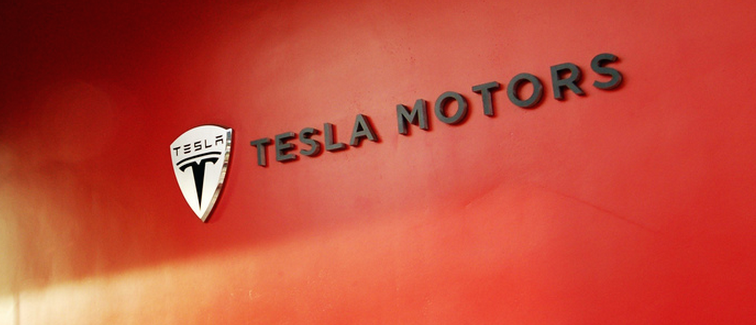Tesla Batteries Might Be The Next Big Threat To Electric Companies
Electric cars might not be great for gas companies, but they feel like a net win for the electric utilities: after all, if you’re plugging in a Tesla in the garage every night, that’s a little more juice they can charge you for using. Tesla’s goal, though, isn’t just to make cars less environmentally hostile, but to make everything else that way too. And that might just be a huge problem for existing electric utilities.
Most electric utilities aren’t quite caught up to what Tesla’s doing, but the ones that have should probably be scared, Bloomberg reports.
The electric-car company is breaking ground on a battery “gigafactory” in Nevada. The factory itself is being designed to have essentially zero emissions and be as eco-friendly as possible. It will not draw power from the electric grid, instead generating its own wind and solar power on site — making the Nevada desert a perfect location.
The factory will not only be making batteries for use powering Tesla’s current and future lines of all-electric cars, but also for the “storage market.” That storage line gets thrown in quickly and then passed over in most press releases and media stories but, Bloomberg says, it’s actually a huge deal.
Those batteries can be paired with home solar panels, which are also getting less expensive every year. A homeowner who installs solar panels (also conveniently made by an Elon Musk company) and can store the excess energy for later use in a rainy week, using one of Tesla’s batteries, suddenly doesn’t even need to be connected to the local grid even for backup.
One analyst told Bloomberg that battery storage is “the Holy Grail for renewables,” because “the energy is intermittent. Finding a way to store that is very powerful.”
Another consultant described the potential to Bloomberg as a “mortal threat,” saying, “That [battery and solar panel package] is an unregulated product you can buy at Home Depot that leaves the old business model with no place to hide.”
Of course, just because people can go installing new energy systems at home doesn’t mean that they’re necessarily going to do it… but they certainly might.
About 40% of all plug-in electric cars sold in the U.S. go to Californians, Bloomberg says. And in California, roughly half of all those 100,000 people who have electric cars either already have solar power at home, or have plans to install it.
California has over 38 million residents, so the 50,000 homeowners who want to use solar power aren’t exactly an existential threat just yet. And Tesla’s factory won’t be online and operational for years yet to come.
But the future can come quickly. Right now, at $70-$100k, Teslas are too pricey for most folks. But with a $30,000 model launching in a few years, electric cars will become more accessible to millions more families. And economies of scale are a real thing: the more widely a technology gets adopted, the more efficiently a company can manufacture it, and the less expensive and more widespread it can continue to become.
Analysts think that the industry is drastically underestimating just how far Tesla has already come, Bloomberg writes. They quote Morgan Stanley analysts, who said “There is not sufficient appreciation of the magnitude of energy storage cost reduction that Tesla has already achieved, nor of the further cost reduction magnitude that Tesla might be able to achieve once the company has constructed its gigafactory.”
Ultimately, Bloomberg concludes, the landscape is changing. So far, electric utilities can do what they like because most consumers don’t exactly have a way to make their own electricity at home. But soon, many of us might. At that point, utilities are going to have to change somehow… whether or not they want to.
Why Elon Musk’s Batteries Scare the Hell Out of the Electric Company [Bloomberg]
Want more consumer news? Visit our parent organization, Consumer Reports, for the latest on scams, recalls, and other consumer issues.


